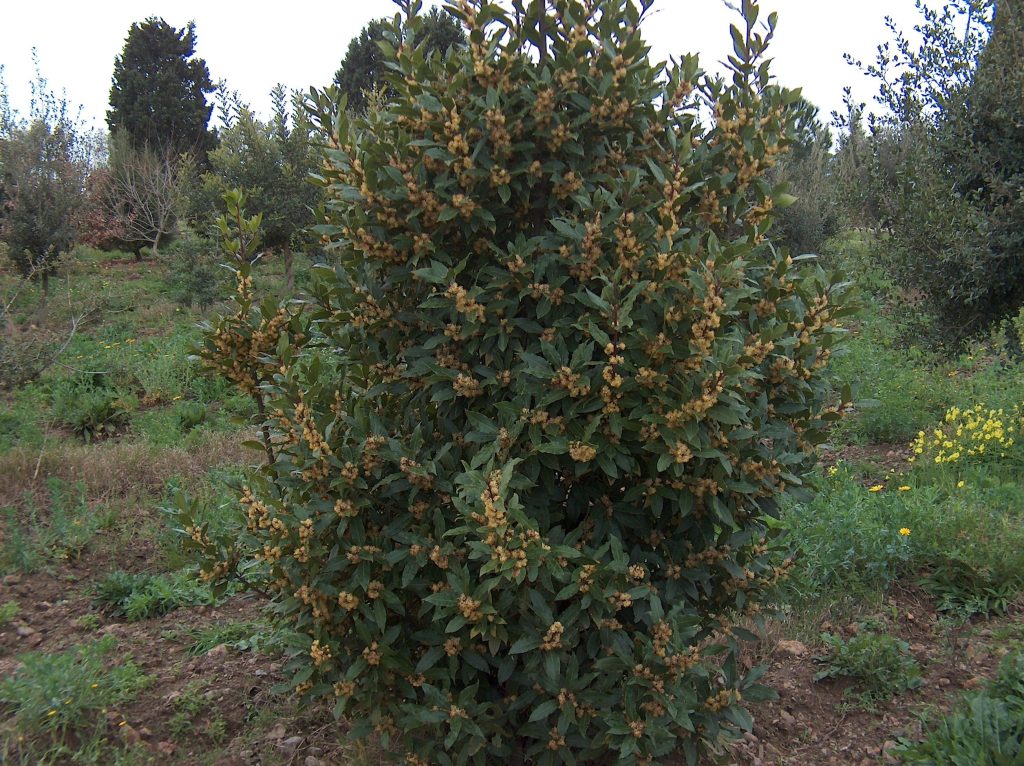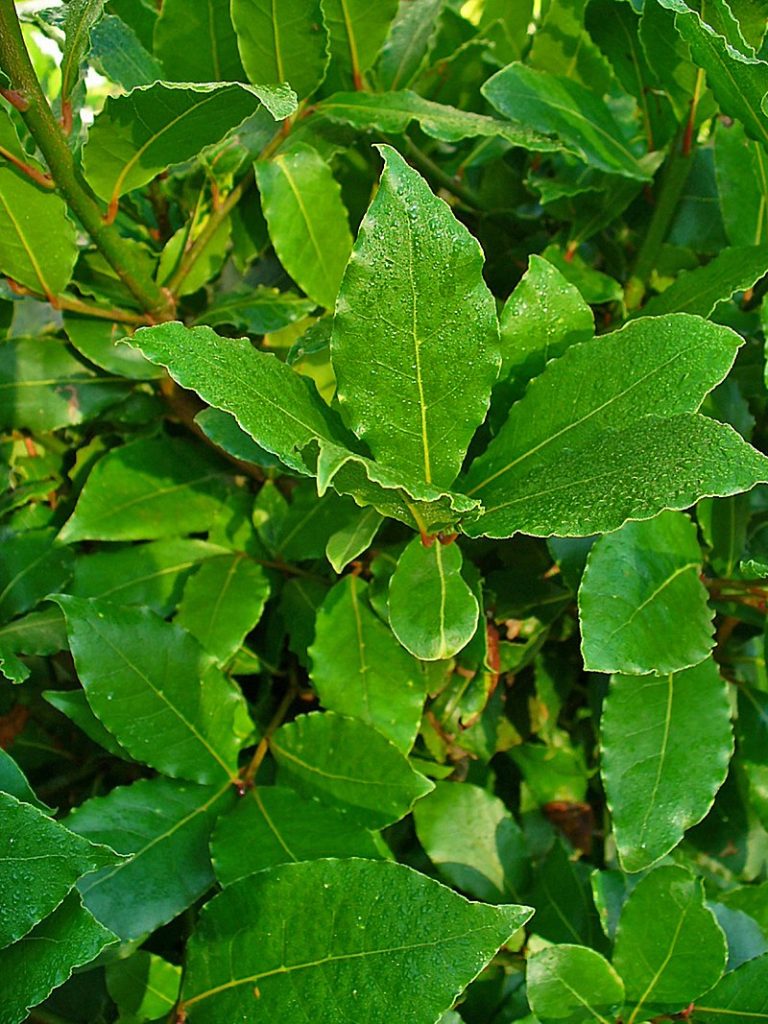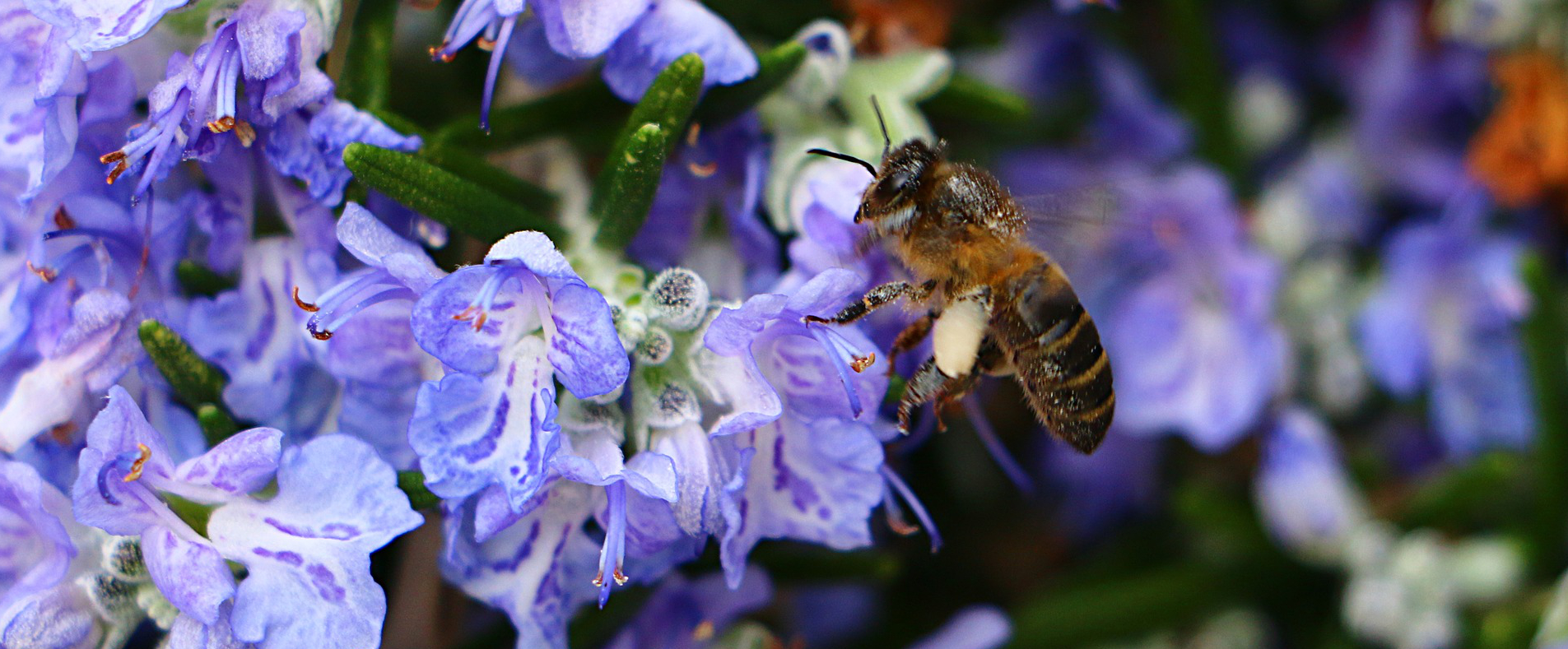“But when we reached the land that was nearby, there we saw near the sea a cavern that opened at the highest point, covered with laurels …” (Homer, Odyssey, IX, 181-183)
Intensely scented and held in great esteem since ancient times, the Laurel (Laurus nobilis L. 1753) also called Lauro, was sacred to the god Apollo and has always been a symbol of glory, wisdom and victory, poetry and peace.

The myth, reported by Ovid and Apuleius in their “Metamorphoses”, tells that Apollo, after killing the snake Python, challenged Cupid, the god of Love by asking him what feats he could boast about. Cupid, feeling offended, prepared two arrows, one of gold with the power to make people fall in love and the other of lead with the power to repel love.
He struck Apollo with the golden arrow and assigned the lead arrow to Daphne, a nymph daughter of the river Peneus and mother earth Gaea. Apollo fell madly in love with Daphne, who instead rejected him by fleeing into the woods. Believing herself lost, Daphne asked for help from Peneus and Gea, who granted their daughter’s request. The nymph stopped, her legs became heavy, her body stretched upwards, and leaves began to grow from her hands; Daphne turned into a Laurel tree right in front of Apollo, who then, embracing its trunk, swore that it would be his sacred plant and he would forever wear a wreath on his head.
The Laurel, Daphne in Greek, belongs to the Lauraceae family. Originally from Anatolia, in Asia Minor, it was first introduced in Greece and Italy and then it spread throughout the Mediterranean basin. It seems that the name Laurus derives from the Celtic word Lawur which means verdant.
It is widespread throughout Italy, but it grows spontaneously only in the central-southern regions. We find it luxuriant from sea level up to 500-800 meters above sea level, in the environments of the Mediterranean scrub in the cool but sunny valleys, where the soils are deep, rich in minerals and nutrients, even in coastal and marine environments. The plant is rustic and withstands rain and cold winter temperatures, but not prolonged frosts.
Typical Laurel woods are currently present mainly in Sardinia, but they are to be considered relics of much larger forests that have disappeared as a result of climate change and fires.

The Laurel is a strongly aromatic evergreen shrub. It has a very variable size; from a small bushy shrub, it can become a tree of considerable size, up to 20 meters high. It has an erect trunk, with smooth bark, first green in the young branches, then dark and blackish in the trunk and in the larger branches, and a thick, pyramidal crown.

The leaves, leathery and shiny, up to 10 cm long, are deep green on the surface, and lighter and opaque on the underside. They are alternate, briefly petiolate, with lanceolate lamina and wavy margin. If viewed against the light, they have translucent dots, given by the glands containing the particularly aromatic essential oil.

In spring, between March and May, the plant is covered with small light yellow flowers, which form an umbrella-like inflorescence located in the axilla of the leaves.
The plant is dioecious: that is, there are specimens with male flowers and others with female flowers, even though they belong to the same species. The male flowers have eight to twelve stamens, the female ones have the ovary.

I frutti maturano in autunno, tra ottobre e novembre; sono drupe ovoidali nero-violacee molto lucide a maturazione e al loro interno presentano un solo seme.

Properties
Bay leaves, in addition to the essential oil, are composed of 45% eucalyptol, also called cineole, and other strongly aromatic substances, and contain vitamins A, C, and group B and important mineral salts including iron, magnesium, and potassium. They, therefore, have an antioxidant, diaphoretic, tonic, balsamic, antiseptic, digestive, and carminative action that is very effective against abdominal swelling. Vitamin C stimulates the immune defenses, while metabolic activity is supported by the B vitamins.
They also have an important antiseptic activity in case of flu symptoms, against cough, bronchitis, and bronchial catarrh, and anti-inflammatory action, against rheumatic and arthritic pain. They are indicated for enhancing memory and the ability to concentrate.
Uses, stories and traditions
The aromatic substances contained in the leaves and fruits have been widely used in the kitchen since ancient times. The leaves used fresh or dried, are used to flavour meats, sauces, vegetables, preserves, and cheeses. Marco Apicius, author of ancient Rome, in his “De re coquinaria” reports the famous recipe of “Porcellus laureatus”.
Laurel essential oil is used in liqueurs and perfumery; its wood is used for smoking meats and cheeses.
In the Middle Ages, Laurel leaves were inserted between pages or parchments of precious books, to preserve them from the attack of molds and paper parasites. This is because the leaves also contain lauric acid, a fatty acid that is a natural repellent against parasites and insects and has specific antiseptic, antibacterial and antiparasitic properties. Even today the leaves are placed in the pantry and in the cupboards to keep away moths and other harmful insects.
In medieval times, the Laurel was considered a real panacea, that is a universal remedy, capable of curing all ills: Abbess Hildegard of Bingen, mystic, seer, prophetess, but also ante litteram scientist, herbalist with a deep culture medical doctor who lived in the 12th century, recommended it to combat migraines, gout, asthma or liver diseases.
During epidemics of plague or other contagious diseases, because of their antiseptic properties, Laurel branches were burned in the rooms to disinfect them and hung in homes to freshen the air.
In ancient Greece, the plant was attributed divinatory properties. In fact, it is said that the Pythia, the priestess of Apollo who gave the responses to the oracle in the sanctuary of Delphi, fell into a trance after inhaling the smoke from the burnt leaves: the plant when used in large doses can have hypnotic effects.
The most emblematic and symbolic use comes from classical antiquity: Greeks and Romans used its leaves to make crowns with which to wrap the heads of poets, musicians, athletes, and leaders, to celebrate their triumphs. This is why the Laurel is called Laurus nobilis. Its branches intertwined in wreaths were a symbol of victory and success. Hence the term Degree intended as an academic qualification and the custom of wrapping the head of recent graduates with a Laurel wreath.

Credits:
Author: Maria Beatrice Lupi. A naturalist and expert in training, planning for sustainable development, participatory methodologies, and European planning. Currently, she is involved in dissemination and education for sustainability.
Translation by Maria Antonietta Sessa




